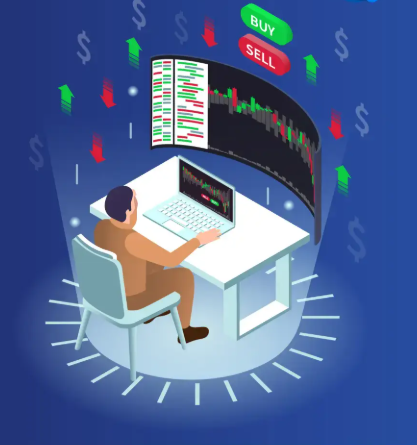Paper Trading in Crypto: A Practical Guide to Demo Trading Accounts
- 177 Views
- admin
- 02/24/2025
- Cryptocurrency
Getting started in cryptocurrency trading can feel overwhelming, especially when real money is at stake. Fortunately, paper trading offers a risk-free environment where traders—both beginners and seasoned professionals—can test strategies, explore market behavior, and become comfortable with trading platforms. In this blog, we’ll explore what paper trading is, how it works, and why it plays a vital role in crypto trading education.
What Is Paper Trading?
Paper trading refers to simulated trading, where users practice buying and selling digital assets without using real money. It replicates live market conditions but utilizes virtual funds, allowing traders to experiment and refine strategies safely. Most major crypto exchanges now offer demo accounts that mirror real-time data, enabling users to interact with markets as if they were trading live.
How Does a Demo Account Work?
A demo account functions just like a real trading account—with one key difference: the funds are not real. Users receive a virtual balance, which they can use to place trades based on actual market movements. The prices, charts, and order types behave just as they would in a live account, giving a realistic experience without any financial risk. This setup is particularly beneficial for new traders looking to build confidence before transitioning to live trading.
Benefits of Using a Crypto Demo Account
Here’s why simulated trading is a crucial step for anyone entering the crypto space:
- Practice Without Risk: You can explore trading mechanisms and develop strategies without worrying about losing money.
- Understand the Platform: Demo accounts provide a chance to become familiar with an exchange’s layout, tools, and order types.
- Learn Market Dynamics: By observing price movements and experimenting with orders, users can develop a feel for market behavior.
- Test Strategies: Both beginners and experienced traders can use demo accounts to test new tactics or refine existing ones.
- Improve Risk Management: Practicing with stop-loss and take-profit settings helps reinforce responsible risk-taking behaviors.
Tips for Beginners
To make the most of your demo trading experience:
- Set Clear Objectives: Define what you want to learn—whether it’s technical analysis, platform navigation, or testing a specific trading approach.
- Treat It Like Real Money: Maintain discipline by sticking to stop-loss rules and proper risk allocation, even though the funds aren’t real.
- Experiment With Different Tactics: Try out various styles of trading—scalping, swing trading, or trend following—to find what suits you best.
- Keep a Trading Journal: Record each trade, along with your reasoning and the outcome, to help identify patterns and improve your decision-making.
- Take Time to Explore Tools: Use the available charts, indicators, and analysis features to understand how each one supports your trading choices.
Advanced Use for Experienced Traders
Even seasoned traders can benefit from demo accounts:
- Test High-Level Strategies: Use demo accounts to simulate advanced strategies like algorithmic or automated trading.
- Stress-Test Your Tactics: Replicate high-volatility environments to understand how your approach holds up during extreme conditions.
- Fine-Tune Risk Parameters: Explore different methods of managing exposure, such as adjusting leverage or refining stop-loss placements.
- Mental Rehearsal: Simulate high-pressure situations to improve emotional control during live trading.
Key Metrics to Monitor
To assess your demo trading performance, pay attention to these indicators:
- Profit/Loss Ratio: Helps measure whether your gains consistently outweigh your losses.
- Win Rate: Shows how often your trades are successful.
- Average Return: Reflects your typical gain or loss per trade.
- Risk-to-Reward Ratio: Balances your potential profits against expected losses, which is vital for sustainable trading.
- Drawdown: Measures the largest drop in your balance from peak to trough—a critical metric for evaluating strategy resilience.
- Trade Frequency: Indicates whether your style is more active or passive.
- Holding Time: Evaluates whether you’re a short-term or long-term trader based on how long you keep positions open.
- Trading Costs: While commissions may not apply in demos, it’s still wise to factor them into your strategy calculations.
Paper Trading vs. Live Trading
While demo trading is excellent for building skills, it doesn’t fully capture the experience of live trading. Real market trading introduces emotional factors—such as fear, greed, and stress—that demo trading cannot replicate. Additionally, decisions made with virtual funds are often more relaxed, which might not reflect how one would act under real financial pressure.
Live trading requires more discipline, emotional control, and precise decision-making. Mistakes have financial consequences, making risk management, strategy execution, and psychological resilience far more critical.
Getting Started With a Crypto Demo Account
Opening a demo account on most crypto exchanges is straightforward. Typically, after registering, users can activate demo trading by claiming demo tokens or credits. These tokens serve as the virtual balance used to place practice trades.
Once you’ve set up your demo funds, head to the trading interface, select a trading pair (such as BTC/USDT), and begin placing orders. Explore all available tools and functionalities to simulate different scenarios and test your strategies thoroughly.
Final Thoughts
Paper trading is one of the best ways to learn crypto trading without risking your capital. Whether you’re just starting out or looking to experiment with a new system, demo accounts offer a safe environment to build knowledge, test methods, and improve confidence. While it won’t fully prepare you for the psychological aspects of live trading, it lays a solid foundation for managing real positions effectively. Use it wisely—and when you’re ready, move to live markets with clarity and control.
Recent Posts
- How AI is Revolutionizing Architectural Design: A Look at Tools, Trends, and the Future
- Streamlining Cyber Risk Assessments Through Automation
- Understanding the Difference Between Blockchain and Distributed Ledger Technology
- Is Bitcoin Mining Still a Viable Venture in 2025?
- Exploring AI: Unveiling Possibilities, Challenges, and Future Implications

